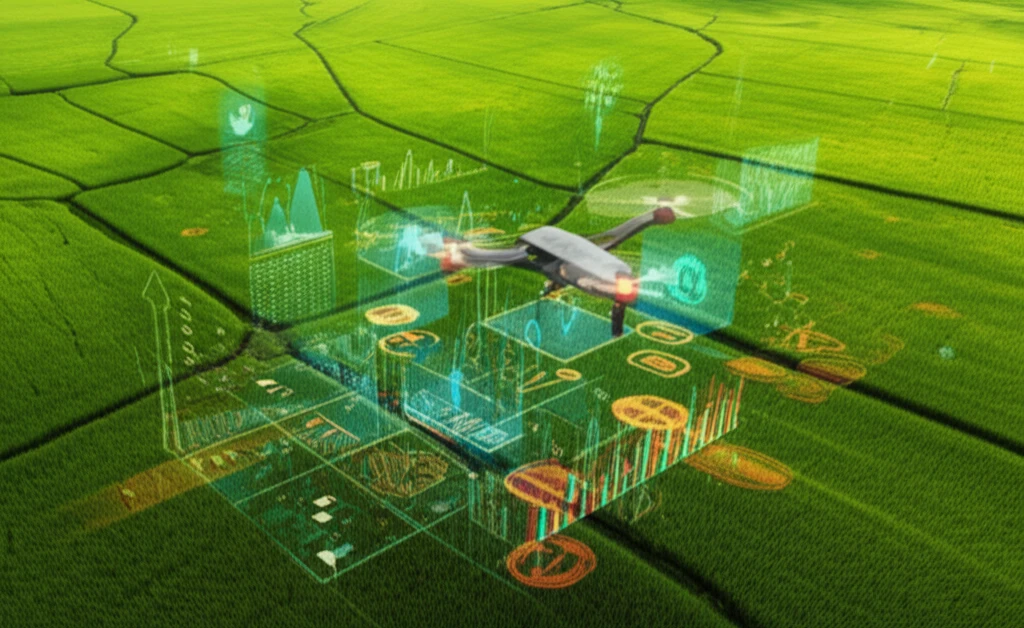
Drones and Deep Learning: Revolutionizing Rice Field Management
"Explore how UAVs and AI are transforming rice farming, improving efficiency and precision in crop management."
China, a leading agricultural nation, heavily relies on rice as a staple crop. Traditional rice farming methods, however, present challenges, including the laborious application of pesticides. Workers often face health risks due to pesticide exposure, especially under high temperatures when volatilization accelerates.
The rise of unmanned aerial vehicles (UAVs), or drones, has begun to revolutionize agricultural practices. Equipped with advanced imaging capabilities, agricultural UAVs offer a promising alternative to manual spraying. Yet, effectively utilizing these drones requires precise knowledge of rice field areas to prevent uneven application and minimize waste.
This article delves into the innovative application of deep learning techniques to analyze UAV-captured images of rice fields. By training convolutional neural networks, we can accurately identify rice-growing areas, differentiate them from weeds, and optimize pesticide application. This approach promises to enhance efficiency, reduce environmental impact, and improve the overall sustainability of rice cultivation.
Deep Learning for Rice Field Recognition: How It Works

Deep learning, particularly convolutional neural networks (CNNs), offers a powerful solution for analyzing complex imagery. Unlike traditional methods, CNNs can automatically learn intricate features from images, making them ideal for distinguishing rice plants from other elements in a field.
- Image Acquisition: High-resolution images of rice fields are captured using UAVs.
- Data Preparation: The images are pre-processed, segmented, and labeled to create a training dataset. This dataset is crucial for teaching the network to recognize different features.
- Network Training: A CNN model, such as ResNet or a custom two-layer network, is trained using the prepared dataset. The network learns to identify patterns and features associated with rice plants.
- Image Classification: Trained network is used to classify the field in real time, and spray the field automatically and with great precision.
The Future of Rice Farming: Autonomous and Sustainable
The integration of UAVs and deep learning represents a significant step towards autonomous and sustainable agriculture. By precisely targeting pesticide applications, we can minimize environmental impact, reduce waste, and improve crop yields.
As UAV technology and deep learning algorithms continue to advance, we can expect even greater improvements in efficiency and precision. Future research may focus on developing more sophisticated models that can account for variations in lighting, weather conditions, and plant health.
Ultimately, this technology has the potential to transform rice farming, making it more efficient, sustainable, and profitable for farmers worldwide.
